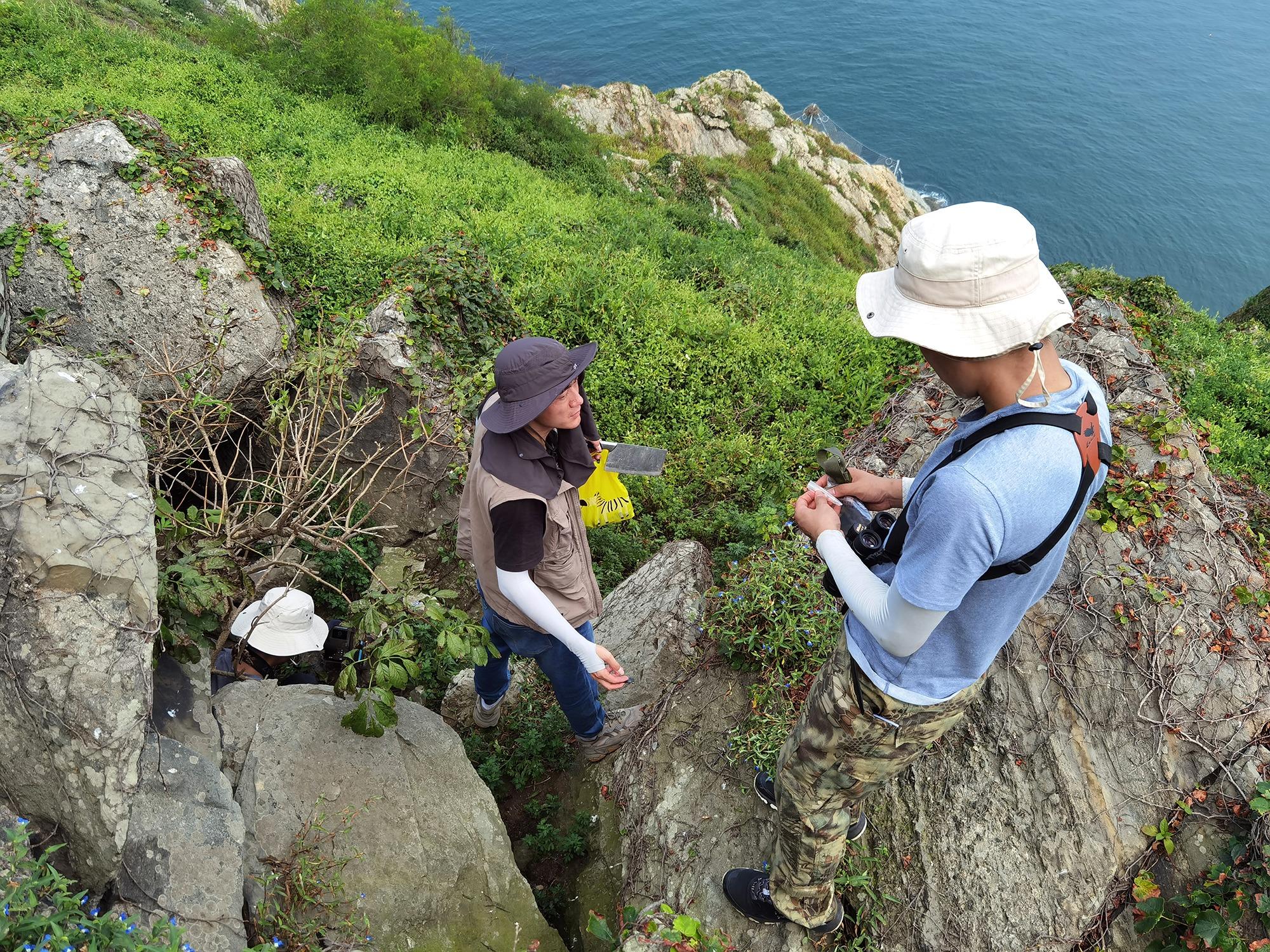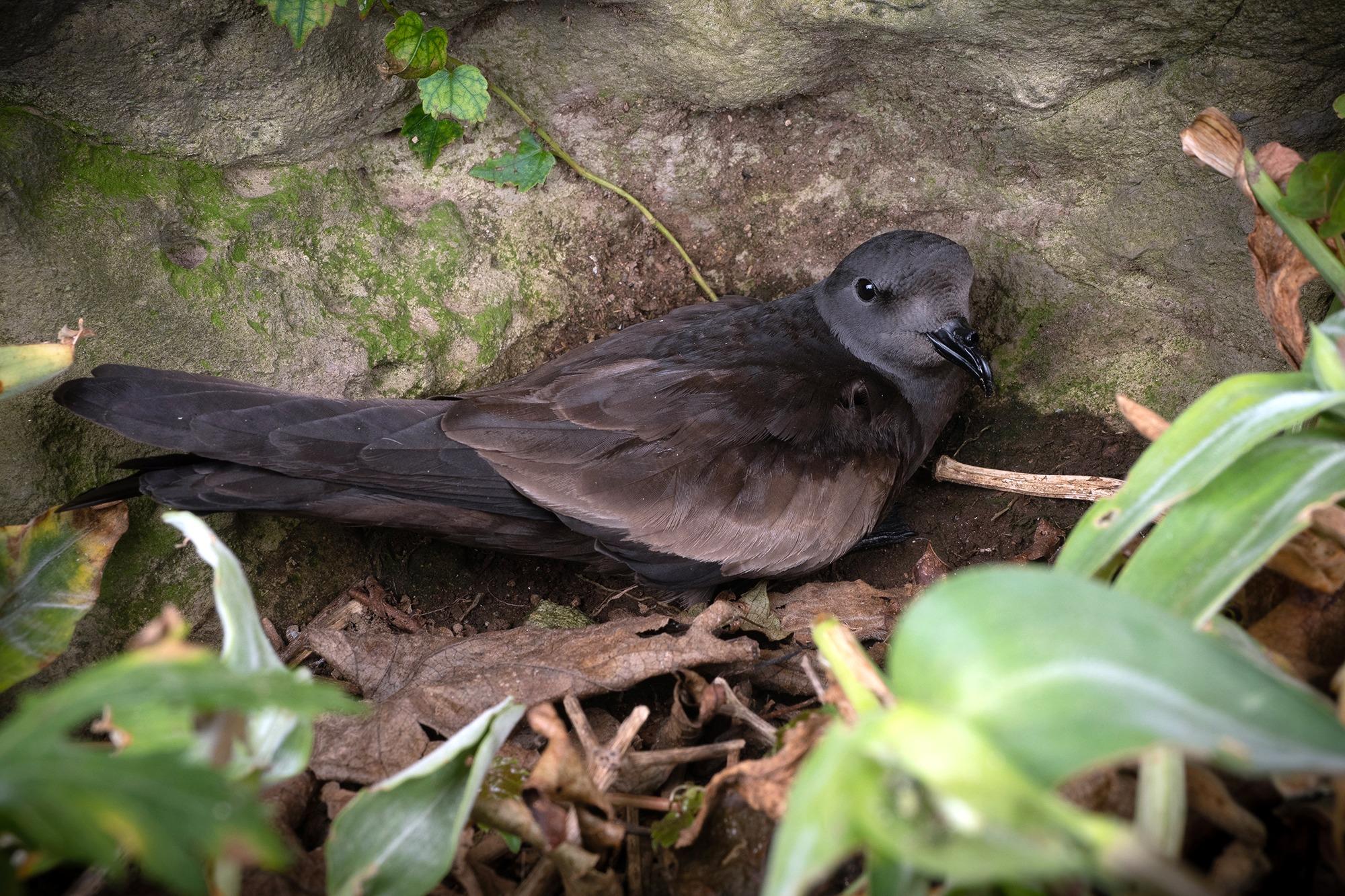Chinese researchers find out more about bird's foraging habits
 Members of the research team try to find breeding Swinhoe's storm petrels on Dagong Island near Qingdao, Shandong province. (PROVIDED TO CHINA DAILY)
Members of the research team try to find breeding Swinhoe's storm petrels on Dagong Island near Qingdao, Shandong province. (PROVIDED TO CHINA DAILY)
"High above the silvery ocean winds are gathering the storm clouds, and between the clouds and ocean proudly wheels the Stormy Petrel, like a streak of sable lightning."
Many Chinese people know the line from The Song of the Stormy Petrel, by Russian writer Maxim Gorky (1868-1936), because it has been in the textbooks of Chinese junior high school students for many years.
However, few of us have seen a storm petrel with our own eyes — even though it is a group of nearly 30 species of seabirds in two families that are widely distributed around the world, and some of the species, including Swinhoe's storm petrel, live around China's coastal areas.
A small seabird with a size similar to that of a starling or shrike, the Swinhoe's storm petrel (Hydrobates monorhis) breeds on small islands in the Northwest Pacific, including the Russian Far East, the Korean Peninsula, China and Japan. It has long been considered a mysterious bird because it spends a lot of time out on the open sea and usually returns to land under the cover of darkness.
READ MORE: Flocking together
Technological limitations, such as the weight of tracking equipment and low spatial resolution, have also hindered people's ability to research the species.
But thanks to a pioneering study conducted by Professor Liu Yang's team from the School of Ecology at Sun Yat-sen University in Shenzhen, Guangdong province, in collaboration with the Qingdao Bird Watching Society, more has been learned about the bird.
 A Swinhoe's storm petrel sits near its nest on Dagong Island. (PROVIDED TO CHINA DAILY)
A Swinhoe's storm petrel sits near its nest on Dagong Island. (PROVIDED TO CHINA DAILY)
Published in the January issue of Avian Research, an open access, peer-reviewed journal that publishes articles covering all aspects of ornithology, the study, titled "Diverse foraging strategies of breeding Swinhoe's storm petrel in the productive marginal sea of the Northwest Pacific", sheds light on the bird's intricate foraging behaviors.
The research has revealed that during their breeding season, Swinhoe's storm petrels fly as far as 348 kilometers from their colonies out to sea to forage for food in the open sea, said Liu, the paper's corresponding coauthor.
Members of the team and the Qingdao Bird Watching Society conducted their research on Dagong Island, which is near Qingdao, Shandong province, in the Yellow Sea.
They fixed small satellite tracking devices on Swinhoe's storm petrels breeding on the island between May and late October and analyzed data they received from the devices.
They found that the storm petrels showed a preference for shallow coastal waters, with short foraging trips being the predominant pattern.
"For parents that have eggs to brood or chicks to feed, they quickly grab some food nearby, which is a fairly reasonable strategy," said Cheng Yachang, the lead author of the paper, who is a postdoctoral researcher in Liu's team.
"We found two distinct foraging strategies. They took longer trips heading southeast and shorter trips southwest. Each strategy was linked to varying environmental factors such as water depth, distance from the coast and sea surface temperature."
 Cheng Yachang (left) from Sun Yat-sen University in Shenzhen, Guangdong province, fixes a tracking device on a storm petrel on the island. (PROVIDED TO CHINA DAILY)
Cheng Yachang (left) from Sun Yat-sen University in Shenzhen, Guangdong province, fixes a tracking device on a storm petrel on the island. (PROVIDED TO CHINA DAILY)
The researchers also found that some of the birds were flexible in their foraging strategies. For example, those with longer wings were more inclined to take longer foraging trips.
"Other physical attributes such as body weight, bill length, and wing width showed no correlation with foraging strategies," Liu said. "It was a surprise for us."
The findings emphasize the influence of environmental factors and individual characteristics on the foraging decisions of Swinhoe's storm petrels in a productive oceanic ecosystem.
"The foraging strategies observed among the storm-petrels breeding on Dagong Island show the species' adaptation to the environmental conditions of the Yellow Sea, aligning with the region's high marine productivity," Liu said.
ALSO READ: China's capital extends helping hand to wildlife
Contrary to initial expectations, the study did not find any significant effects from offshore wind conditions or marine primary productivity, which is measured by using the chlorophyll-a concentration observed by remote sensing satellites, a well-used indicator for evaluating nutrition levels in the open sea.
Instead, it hints at the presence of specific but as yet unidentified resources in the open sea, such as particular fauna within the Yellow Sea Cold Water Mass, which may play a crucial role in attracting foraging seabirds.
"The study's findings not only enhance our understanding of the bird's behaviors," Liu said. "It also underscores the importance of continued research and efforts to protect these enigmatic seabirds and the delicate ecosystems they inhabit."


